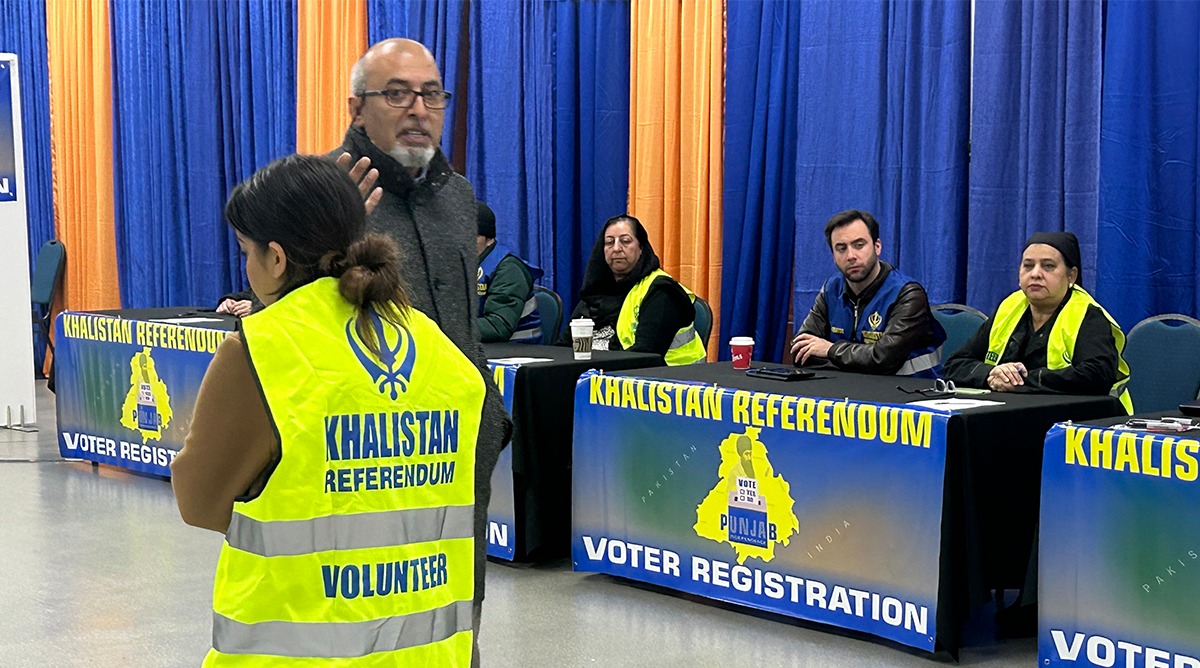The Khalistan referendum is not just about the Punjab. It's a preview of a future with transnational direct democracy.
By JOE MATHEWS
On January 28, Californians will finally get to cast ballots in a historic vote on whether to create a new independent country.
Why is this the first you’re hearing of this election? Because the only Californians who can vote in the election are Sikhs. The proposed independent country would be in Punjab, a state in northern India.
But that’s no reason to overlook what might be the most important election in the Golden State next year.
Indeed, the Khalistan referendum, as this ballot measure is known, is worthy of your attention for two reasons.
First, the referendum raises the questions of whether democracy is more likely to quell, or inflame, violence, and how well it might resolve deep divisions over nationhood. Second, the vote is part of an ongoing experiment in how ballot measures, like those commonplace in California, might shape a new global system of democracy.
The Khalistan referendum was proposed by Sikhs for Justice, a U.S.-based group that connects the Sikh diaspora. Sikhism is a 500-plus-year-old religion, fusing elements of Hinduism, Islam and other faiths, and founded by a mystic who believed God transcends religious differences. There are an estimated 25 million Sikhs worldwide, approximately 80 percent of whom reside in India, primarily in the state of Punjab. California is home to more than 250,000 Sikhs, most of whom live in the Central Valley or the Bay Area.
The referendum’s supporters argue that Sikhs, as targets of discrimination and violence in India and elsewhere, need the protection of an independent Sikh-majority nation, which they would call Khalistan.
But India has opposed the referendum, banning Sikhs for Justice in 2019 for “espousing secessionism” and labeling some referendum supporters as terrorists.
These claims are grounded in a longstanding violent conflict between the government and pro-independence armed insurgents. In June 1984, in pursuit of Khalistani separatists, the Indian Army seized Sikhism’s holiest shrine. The number of people killed in the operation is disputed—the government says hundreds, while Sikh groups say thousands.
In October of that year, two of Prime Minister Indira Gandhi’s bodyguards, who were Sikh, assassinated her. Her death inspired anti-Sikh riots that killed thousands of Sikhs and Sikh leaders, which in turn triggered violence by the Khalistan insurgency, including the bombing of an Air India jet taking off from Montreal in 1985. Over the next decade, some 30,000 people lost their lives in India’s worst religious violence since the 1947 partition. The violence mostly faded away, but the Punjab was never resolved. More recent disputes between the Indian government and Sikh farmers over agricultural policy have revived interest in Khalistan independence, in the Punjab and among the Sikh diaspora.
The Indian government says the referendum could inflame violence. But its Sikh backers say that, to the contrary, the referendum is a democratic tool designed to find a peaceful resolution of longstanding conflict in Punjab, as provided for in the United Nations Charter, which grants all peoples the right to self-determination through referendum.
Referenda on independence have become more common since World War II, though they rarely produce new countries. Perhaps the best-known examples are the multiple referenda in Puerto Rico in and the Scottish independence referendum in 2014.
Scholar of referenda Matt Qvortrup in his book I Want to Break Free: A Practical Guide to Making a New Country wrote that “From a purely rational perspective, many of these referendums seem pointless, as they unlikely result in the formation of a new State. However, from a symbolic perspective, the very vote itself helps to create unity and is a part of a mental state formation process.”
The Khalistan referendum is a global election, held on different dates and in different world cities that are home to many Sikhs. The January 28 balloting, which will take place in San Francisco, follows votes in London (2021); in Geneva, Switzerland (2021); in Brescia and Aprilia, Italy (2022); in Melbourne, Australia (2023); in two cities near Toronto, Brampton (2022) and Mississauga (2023); and in the Vancouver area (twice this fall). They may also hold referenda in Malaysia and East Africa, which also have large Sikh diaspora communities.
The referendum itself is non-binding—even if the majority of voters favor independence, it won’t guarantee a new nation. But if the results show widespread support for independence among the diaspora, organizers plan to hold a Khalistan referendum in Punjab itself in 2025. They hope that a vote for independence there could bring international pressure on India to recognize Khalistan.
To convince the world of the referendum’s legitimacy, Sikhs for Justice does not oversee the balloting. Instead, an independent international committee, including some of the world’s leading scholars and practitioners of direct democracy, sets referendum rules and observes and administers the voting.
The committee is neutral on the referendum question of an independent Khalistan. But many members have a longstanding interest in trying to devise truly worldwide elections so that people in every country can jointly decide policies on global issues, like climate change. Some members are advising an effort to develop a “World Citizens” ballot initiative, to be administered by the U.N.
I know several committee members, through a global direct democracy forum I ran for the last 15 years. The committee’s chair is Dane Waters, a U.S.-born, Beirut-based democracy practitioner and animal rights activist, who is the founder and chair of the Initiative & Referendum Institute at the University of Southern California. I embedded with Waters at the most recent Khalistan referendum vote, in the Vancouver suburb of Surrey, British Columbia on October 29.
The atmosphere was tense. The Surrey-based Sikh leader Hardeep Singh Nijjar, a Canadian citizen who was an organizer of the referendum, had been assassinated in June. The killing created high-level conflict between India and Canada, whose government says it has credible evidence tying the assassination to India’s government.
More recently, U.S. prosecutors filed charges against a man hired by an Indian government employee to assassinate a referendum organizer, who is an American citizen, in New York this year.
Nijjar’s death had a direct impact on the referendum. Waters and the international committee prefer to hold votes at neutral sites and had rented space at a Surrey public school. But after the Canadian government’s announcement that India was behind the Nijjar assassination, the school and others refused to host, citing security concerns.
The vote was instead conducted in the campus around Surrey’s gurudwara or Sikh temple, steps from where Nijjar was shot and killed. A large detail of Surrey local police and Royal Canadian Mounted Police provided security.
I attended the second day of referendum voting in Surrey; on the first, September 10, lines were so long that some voters had been turned away. Turnout was also strong for this second vote. At 6 a.m., more than 100 people had lined up, in 30-degree weather, for an election that wouldn’t begin until 9. Outside the voting hall, Khalistan supporters played Punjabi music so loudly that it was hard for me to interview voters waiting in lines that stretched 100 yards out onto a sidewalk.
Inside, however, the event was a quiet and business-like operation, familiar to anyone who has voted in Western elections. Poll workers from British Columbia elections— all non-Sikhs—had been hired through a third party to conduct the referendum. At each check-in table, one of the paid poll workers was paired with a Punjabi-speaking Sikh volunteer, almost all women, who could translate for voters less comfortable in English.
Any Sikh, or anyone married to a Sikh, could register and vote with a photo ID. Poll workers checked names against previous voting rolls to avoid double-voting. People moved through registration, and private voting booths, before exiting into a small festival with tables of Punjabi food, and coffee and donuts from Tim Horton’s, a Canadian institution.
Tens of thousands of people cast ballots. In my conversations about their reasons for voting, older voters recalled violence they or loved ones had suffered in Punjab. Younger, Canadian-born Sikh voters often were more likely to say they were participating because of the discriminatory treatment of Sikh farmers under 2020 agricultural laws (which sparked a farmers’ strike and a retreat by the Indian government). Some mentioned the Gaza war; far better, voters said, to resolve disputes over nationhood through a democratic referendum than through violence.
Could the Khalistan referendum become a model for deciding whether breakaway provinces or secession-minded states can leave and form their own nation? That remains to be seen. But it seems fitting that California, which sometimes dreams of secession, is the next site for this glimpse into the democratic future.
This was originally published at Zócalo Public Square.





